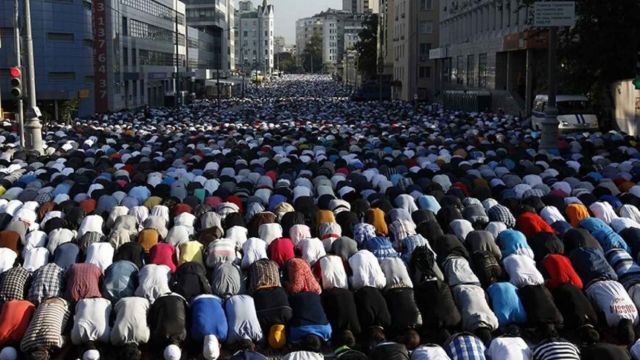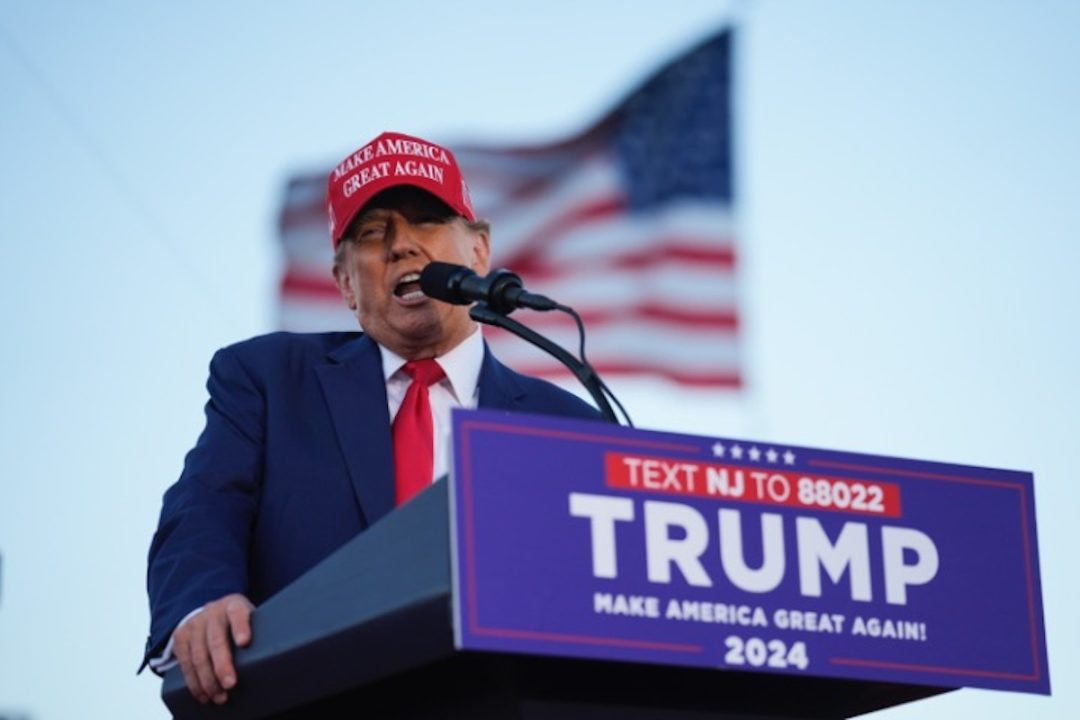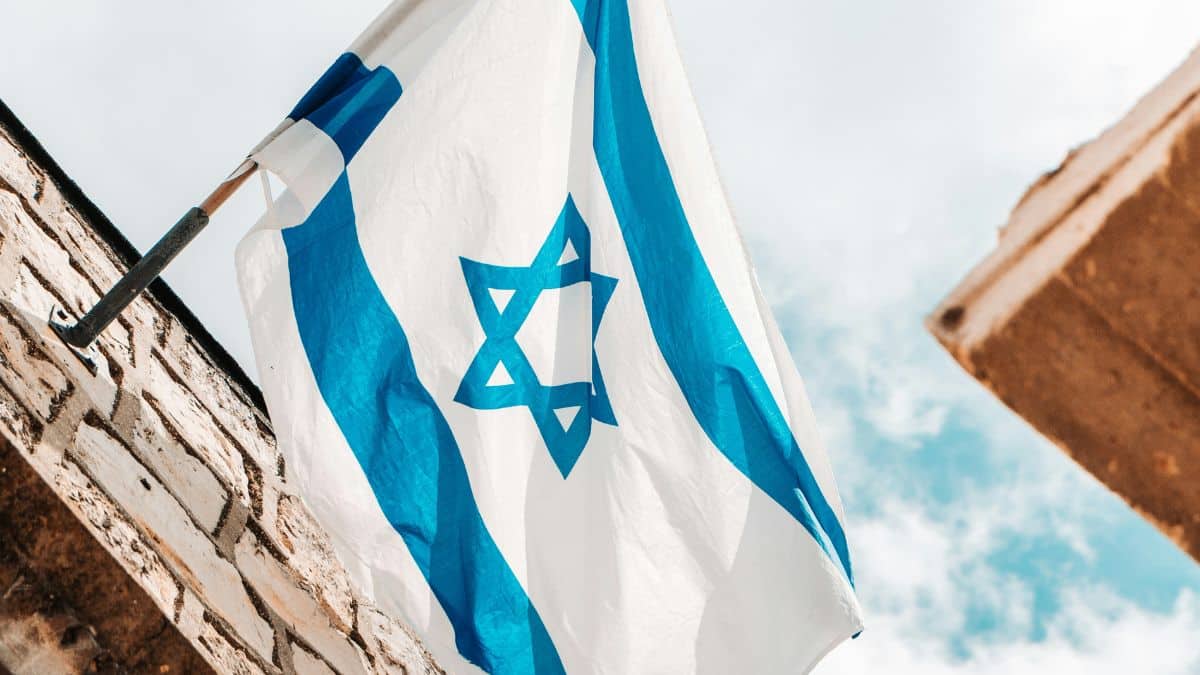0 Comentários
0 Compartilhamentos
176 Visualizações

Diretório
Elevate your Sngine platform to new levels with plugins from YubNub Digital Media!
-
Faça Login para curtir, compartilhar e comentar!
-
 YUBNUB.NEWSKnife-Edge Recounts Could Decide Parliaments Make-UpIt could take weeks to confirm the members of Australias next parliament, with one seat sitting on a margin of only eight votes and an incumbent in another requesting a second tally.Independent MP0 Comentários 0 Compartilhamentos 176 Visualizações
YUBNUB.NEWSKnife-Edge Recounts Could Decide Parliaments Make-UpIt could take weeks to confirm the members of Australias next parliament, with one seat sitting on a margin of only eight votes and an incumbent in another requesting a second tally.Independent MP0 Comentários 0 Compartilhamentos 176 Visualizações -
 YUBNUB.NEWSIs the West Suffering From an Absence of Islam?The Washington Standard 2025-05-24 Has the true Islam been lost? And is its recovery what both the West and the Islamic world really need? In a fascinating and thoughtful recent article, the Muslim intellectual0 Comentários 0 Compartilhamentos 175 Visualizações
YUBNUB.NEWSIs the West Suffering From an Absence of Islam?The Washington Standard 2025-05-24 Has the true Islam been lost? And is its recovery what both the West and the Islamic world really need? In a fascinating and thoughtful recent article, the Muslim intellectual0 Comentários 0 Compartilhamentos 175 Visualizações -
 YUBNUB.NEWSMan Allegedly Tortures Italian Businessman For Weeks With Chainsaw and Taser, Attempting To Extort Money, Police SayReaders, Instead of sucking up to the political and corporate powers that dominate America, The Daily Caller is fighting for you our readers. We humbly ask you to consider joining us in this fight.0 Comentários 0 Compartilhamentos 176 Visualizações
YUBNUB.NEWSMan Allegedly Tortures Italian Businessman For Weeks With Chainsaw and Taser, Attempting To Extort Money, Police SayReaders, Instead of sucking up to the political and corporate powers that dominate America, The Daily Caller is fighting for you our readers. We humbly ask you to consider joining us in this fight.0 Comentários 0 Compartilhamentos 176 Visualizações -
 YUBNUB.NEWSLet The Men Arise! (Video)Tim Brown 2025-05-24 In this episode, well pick up with where we left off in Part I (https://rumble.com/v6ts1tn-american-men-you-are-the-law.html) concerning men and the militia. Well take a historical,0 Comentários 0 Compartilhamentos 178 Visualizações
YUBNUB.NEWSLet The Men Arise! (Video)Tim Brown 2025-05-24 In this episode, well pick up with where we left off in Part I (https://rumble.com/v6ts1tn-american-men-you-are-the-law.html) concerning men and the militia. Well take a historical,0 Comentários 0 Compartilhamentos 178 Visualizações -
 YUBNUB.NEWSTrump, His New MAGA Critics, and the Art of the PossibleAP Images .ta-paywall-container {position: relative;display: flex;flex-direction: column; min-height:60px;} #ta-paywall-overlay {position: absolute;top: 0;left: 0;right: 0;bottom: 0;display: flex;align-items:0 Comentários 0 Compartilhamentos 175 Visualizações
YUBNUB.NEWSTrump, His New MAGA Critics, and the Art of the PossibleAP Images .ta-paywall-container {position: relative;display: flex;flex-direction: column; min-height:60px;} #ta-paywall-overlay {position: absolute;top: 0;left: 0;right: 0;bottom: 0;display: flex;align-items:0 Comentários 0 Compartilhamentos 175 Visualizações -
 YUBNUB.NEWSDemocrat Calls Out Socialists After Terror AttackChicago Alderman Raymond Lopez issued a sharp rebuke of the Democratic Party on Newsmaxs Carl Higbie Frontline Friday, warning that Democrats must stop ceding ground to socialist radicals who pose0 Comentários 0 Compartilhamentos 175 Visualizações
YUBNUB.NEWSDemocrat Calls Out Socialists After Terror AttackChicago Alderman Raymond Lopez issued a sharp rebuke of the Democratic Party on Newsmaxs Carl Higbie Frontline Friday, warning that Democrats must stop ceding ground to socialist radicals who pose0 Comentários 0 Compartilhamentos 175 Visualizações -
 YUBNUB.NEWSTrump to Deliver West Point Speech Amid DEI FightPresident Donald Trump will deliver the commencement address at the U.S. Military Academy at West Point on Saturday, marking a key moment for the administrations relationship with Americas service0 Comentários 0 Compartilhamentos 175 Visualizações
YUBNUB.NEWSTrump to Deliver West Point Speech Amid DEI FightPresident Donald Trump will deliver the commencement address at the U.S. Military Academy at West Point on Saturday, marking a key moment for the administrations relationship with Americas service0 Comentários 0 Compartilhamentos 175 Visualizações -
 WWW.LOVEMEOW.COMCat Giving Her All at Vet Clinic, Trying to Get Herself Noticed Until She Has Place She Can Call HomeA cat is giving her all at a vet clinic, trying to get herself noticed until she has a place she can call home.Dolly MonroeSparkle Cat RescueDolly Monroe, a delightful cat named after Dolly Parton and Marilyn Monroe, arrived at a veterinary clinic, eager for a fresh start.She had been wandering the streets, fending for herself, until an independent rescuer stumbled upon her. The friendly stray made her case by walking up to the rescuer as if she'd been waiting for this moment her entire life.Upon arriving at the vet clinic, Monroe was thrilled to receive attention and care and finally enjoy a full meal.She was rescued from the streets and brought to a vet clinic for a new startSparkle Cat RescueEstimated to be 1-2 years old, Monroe was about the size of a teenage cat. She adored attention as much as she loved food, eagerly trailing the staff and always ready to lend a paw. "She is the sweetest girl and very social, too friendly to live life outside as a colony cat," Sparkle Cat Rescue shared.Monroe was happy and spirited, strutting around with her tail held high. Grateful to be safe indoors, she never looked back.She was eager for attention and always ready to lend a pawSparkle Cat RescueSparkle Cat Rescue was contacted to help Monroe find her forever home. While they searched for the perfect match, Monroe stayed at the vet's office, charming the staff with her purrs and snuggles and soaking up all the love they offered.She even "supervised" them in the storage area, making sure the food and supplies were fully stocked.Sparkle Cat RescueShe claimed her favorite perch by the window, watching little critters while basking in the warm sunlight. Over time, she blossomed into a gorgeous cat with her signature beauty marks and captivating gemstone green eyes. As days turned into weeks and weeks into months, Monroe patiently waited for the right family to find her.Sparkle Cat RescueAfter living at the clinic for a year, she knows everyone and their routines by heart. She's become the highlight of their day, greeting them with her best looks, soft purrs, and joyful roly-polies.She loves being the center of attention but happily shares the spotlight with other cats at the clinic. She is always ready for a new adventure with her feline friends.She's been living at the clinic for a yearSparkle Cat RescueWhenever someone walks by, she flops onto her back, hoping to catch their eye. With a hint of a smile on her face, she delights everyone she meets, often reaching out a paw for extra attention.Monroe has been a star at the clinic, bringing sunshine to all who cross her path.Sparkle Cat RescueAfter a year of indoor life, she has filled out nicely and come into her own. While she has enjoyed her time helping out at the clinic, she's now ready to begin a new chapter in a place she can truly call her own."She's a silly, playful girl who loves lounging in the window hammock seat."She wears a "smile" on her faceSparkle Cat RescueFrom the moment Monroe approached her rescuer, her life was forever changed. Now, she's thriving and smiling every day, doing what she does best: bringing joy to those around her.Sparkle Cat RescueShare this story with your friends. More on Dolly Monroe (in NC) at Sparkle Cat Rescue on Instagram and Facebook.Related story: Cat Shows Up Outside Someone's Door with Her Kittens, Ends Up Finding a Place of Her Own0 Comentários 0 Compartilhamentos 224 Visualizações
WWW.LOVEMEOW.COMCat Giving Her All at Vet Clinic, Trying to Get Herself Noticed Until She Has Place She Can Call HomeA cat is giving her all at a vet clinic, trying to get herself noticed until she has a place she can call home.Dolly MonroeSparkle Cat RescueDolly Monroe, a delightful cat named after Dolly Parton and Marilyn Monroe, arrived at a veterinary clinic, eager for a fresh start.She had been wandering the streets, fending for herself, until an independent rescuer stumbled upon her. The friendly stray made her case by walking up to the rescuer as if she'd been waiting for this moment her entire life.Upon arriving at the vet clinic, Monroe was thrilled to receive attention and care and finally enjoy a full meal.She was rescued from the streets and brought to a vet clinic for a new startSparkle Cat RescueEstimated to be 1-2 years old, Monroe was about the size of a teenage cat. She adored attention as much as she loved food, eagerly trailing the staff and always ready to lend a paw. "She is the sweetest girl and very social, too friendly to live life outside as a colony cat," Sparkle Cat Rescue shared.Monroe was happy and spirited, strutting around with her tail held high. Grateful to be safe indoors, she never looked back.She was eager for attention and always ready to lend a pawSparkle Cat RescueSparkle Cat Rescue was contacted to help Monroe find her forever home. While they searched for the perfect match, Monroe stayed at the vet's office, charming the staff with her purrs and snuggles and soaking up all the love they offered.She even "supervised" them in the storage area, making sure the food and supplies were fully stocked.Sparkle Cat RescueShe claimed her favorite perch by the window, watching little critters while basking in the warm sunlight. Over time, she blossomed into a gorgeous cat with her signature beauty marks and captivating gemstone green eyes. As days turned into weeks and weeks into months, Monroe patiently waited for the right family to find her.Sparkle Cat RescueAfter living at the clinic for a year, she knows everyone and their routines by heart. She's become the highlight of their day, greeting them with her best looks, soft purrs, and joyful roly-polies.She loves being the center of attention but happily shares the spotlight with other cats at the clinic. She is always ready for a new adventure with her feline friends.She's been living at the clinic for a yearSparkle Cat RescueWhenever someone walks by, she flops onto her back, hoping to catch their eye. With a hint of a smile on her face, she delights everyone she meets, often reaching out a paw for extra attention.Monroe has been a star at the clinic, bringing sunshine to all who cross her path.Sparkle Cat RescueAfter a year of indoor life, she has filled out nicely and come into her own. While she has enjoyed her time helping out at the clinic, she's now ready to begin a new chapter in a place she can truly call her own."She's a silly, playful girl who loves lounging in the window hammock seat."She wears a "smile" on her faceSparkle Cat RescueFrom the moment Monroe approached her rescuer, her life was forever changed. Now, she's thriving and smiling every day, doing what she does best: bringing joy to those around her.Sparkle Cat RescueShare this story with your friends. More on Dolly Monroe (in NC) at Sparkle Cat Rescue on Instagram and Facebook.Related story: Cat Shows Up Outside Someone's Door with Her Kittens, Ends Up Finding a Place of Her Own0 Comentários 0 Compartilhamentos 224 Visualizações -
 YUBNUB.NEWSDrug smuggling cat carrying 230 grams of pot and 67 grams of crack caught sneaking into Costa Rican jailLook what the cat dragged in. A cat carrying a massive amount of crack cocaine and marijuana into a jail in Costa Rica was taken into custody by prison guards with the stash tied to its back, according0 Comentários 0 Compartilhamentos 174 Visualizações
YUBNUB.NEWSDrug smuggling cat carrying 230 grams of pot and 67 grams of crack caught sneaking into Costa Rican jailLook what the cat dragged in. A cat carrying a massive amount of crack cocaine and marijuana into a jail in Costa Rica was taken into custody by prison guards with the stash tied to its back, according0 Comentários 0 Compartilhamentos 174 Visualizações



